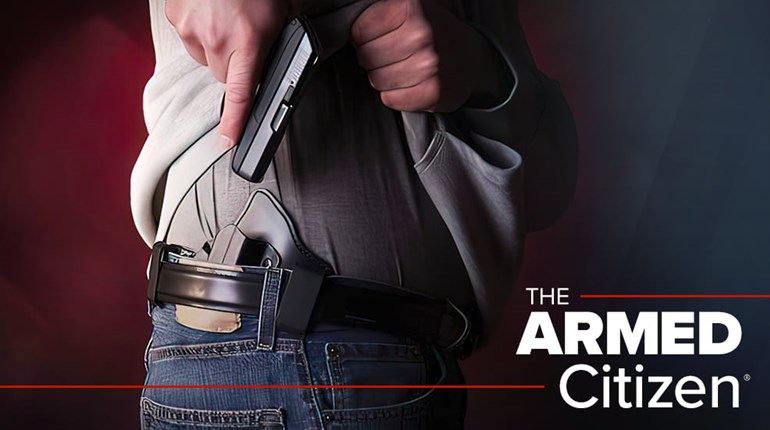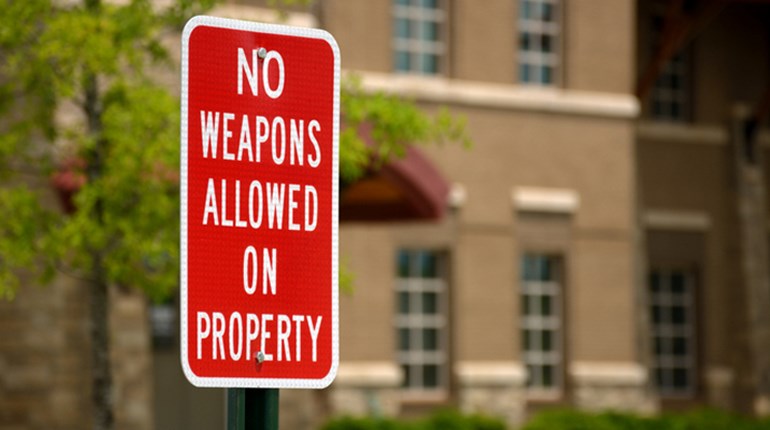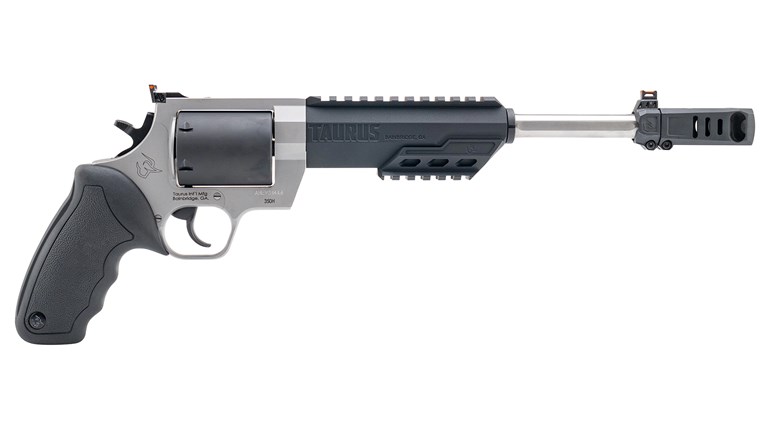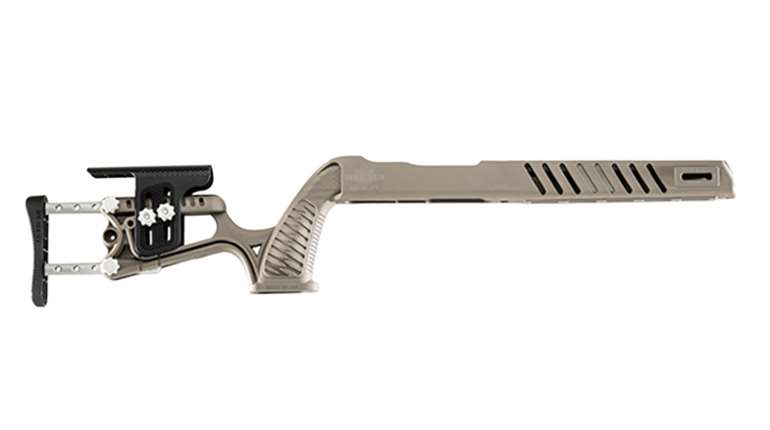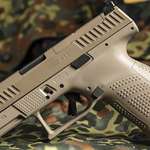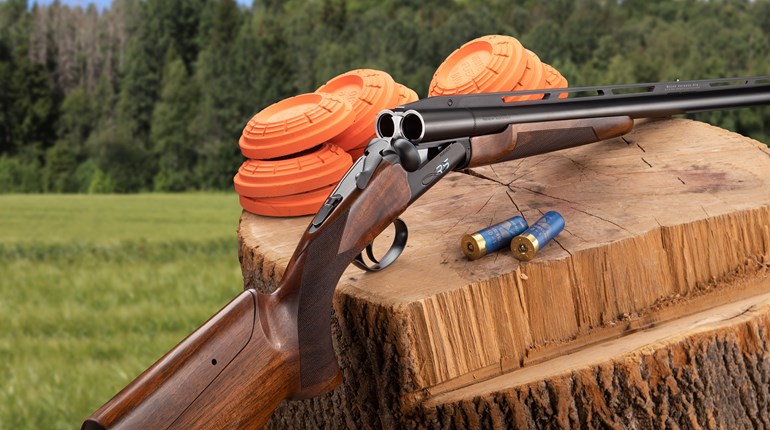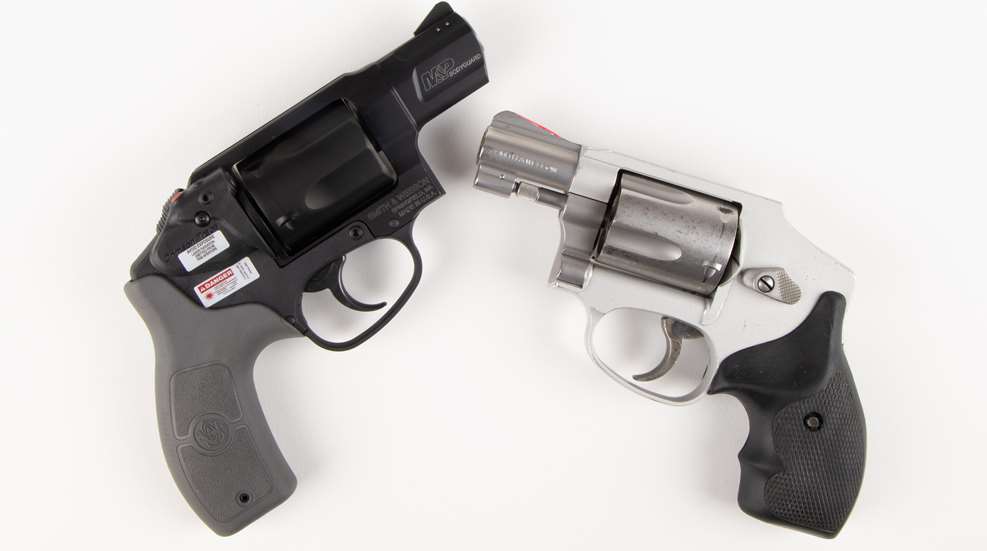
The Smith & Wesson J-frame revolver has been a staple in the self-defense industry for decades. It’s not hard to figure out why. These guns offer solid performance in compact packages. From pocket carry around the house to backing up a police officer’s primary pistol, the Smith J-frame spends a lot of time protecting those we love.
Times change and so has the Smith & Wesson small-framed revolver. Introduced in 2011, the Bodyguard 38 shared the same look as the company’s J-framed Centennial revolvers, but used a multi-material frame instead of an all steel or aluminum one. Further, the new gun had an ambidextrous cylinder release and optional laser sight.
After nearly a decade of service from the “new” Bodyguard 38, I wanted to see how the modern wheelgun compared to an older Roscoe — in this case my pre-lock Smith & Wesson 642 from 1996.
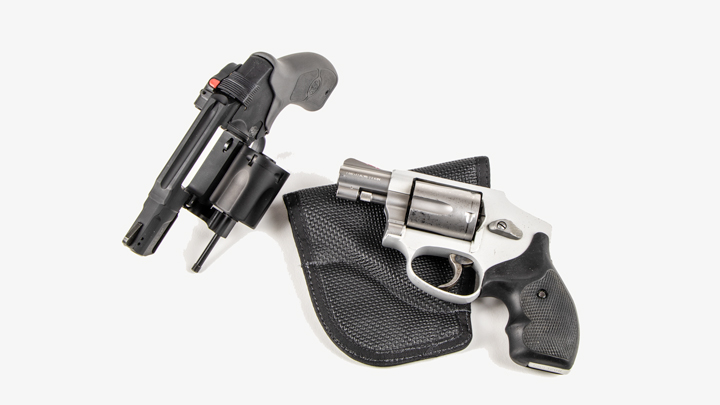
Traditional
The classic J-frame design is nothing new and was introduced before I was born. It’s seen many designs and cartridges from the .22 LR to the .357 Magnum. I purchased my 642 brand new in 1996 for use as a backup gun in my burgeoning law enforcement career. Chambered in .38 Special, I knew the five-shot snub would be ideal since it was utterly reliable and resistant to mud, seawater and all kinds of crud I would drag it through in the coming years.
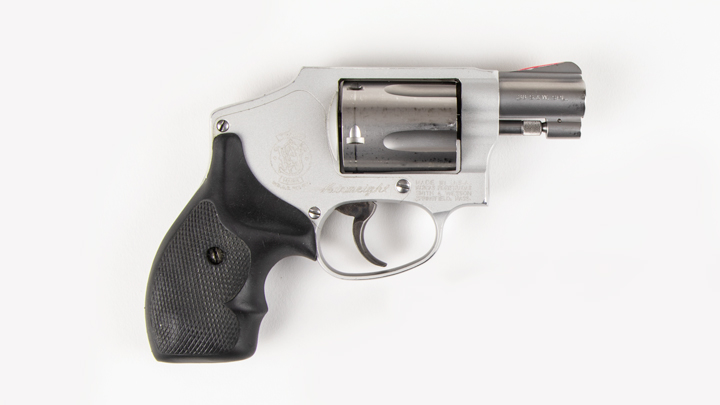
It performed well and continues its protective duties even though I’ve left policing to the younger generation. While the finish doesn’t have the same shine it once did, the trigger remains smooth and the ignition is consistent. When I do my job, it puts those .38 slugs right where they need to go.
Modern
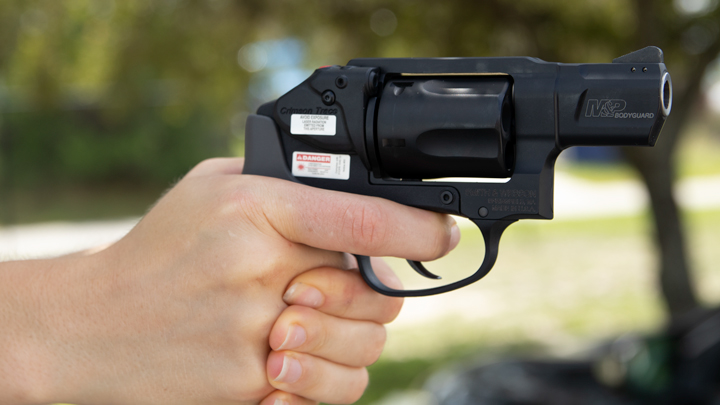
In many ways, the M&P Bodyguard 38 is an evolution of my own 642. It is a five-shot wheelgun chambered for the .38 Special cartridge with a fixed front sight and notch rear. Even though there are differences, both guns run much the same way and feel similar in the hand.
However, Smith & Wesson took the opportunity to improve on the classic pattern when it developed the Bodyguard 38. The differences might seem small, but they are significant and should be considered. Some of the differences include the frame design, location of the cylinder release, improved sights and a significantly longer extractor rod.
How do these differences play out on the range? Do they work out to be improvements? I had to know.
Shooting Time
Although the guns look similar, the differences between the 642 and M&P Bodyguard 38 are readily felt. My 642 balanced better in my hand though the Bodyguard 38 had a slightly longer grip. That additional length allowed me to get my pinky on the bottom of the gun. When shooting the revolver, having my pinky on the grip gives me a greater degree of control over the gun.
The sights are undeniably better on the Bodyguard 38. The rear notch is larger and better defined than on my 642. I made more accurate shots because of this.
The front sight is a serrated black ramp. It does little to draw the eye to it, but it was more than enough for accurate target shooting. Although the front sight on the 642 is also a simple serrated ramp, the Bodyguard holds the edge here also. Smith & Wesson pinned the front sight to the M&P Bodyguard 38 instead of making it integral with the barrel. In other words, you can easily swap out the front sight on the Bodyguard. The 642 requires an angle grinder [Editor's note: No. Just, no. Do NOT try this at home].
One of the more discussed aspects of the M&P Bodyguard 38 is the partially-polymer frame. Some have suggested that the polymer flexes during recoil to reduce the amount of sting that transfers to your hand. I felt no discernible improvement in felt recoil with either standard pressure or +P loads.
On a traditional Smith & Wesson revolver like the 642, the cylinder release is located on the left side of the handgun. A centerline release is used on the Bodyguard. This allows a shooter to access it with either gripping hand. I didn’t feel like it improved my ability to open the cylinder, but it did not slow me down either. I think this is largely just a matter of preference. For left-handed shooters, though, it's a sea change.
A significant improvement on the Bodyguard is the longer extractor rod. With the 642, the short rod does not consistently push the spent brass clear of the cylinders. While getting a rim trapped under the extractor star has been very rare, it is not uncommon to need to brush away one of the empties before reloading.
While shooting the M&P Bodyguard, I did not have any issues with removing spent brass. I believe this is due to the longer extractor rod. To protect it, Smith & Wesson included a full-length shroud for the rod.
Bottom Line
So, what’s the final word on these guns? Does youth and innovation trump the tried and true classic? In some ways, yes. The extractor rod length and improved sights make a large difference in the performance of the M&P Bodyguard 38.
Nevertheless, I’m not trading in my 642. While I would like some of the Bodyguard’s features, my relationship with my trusty wheelgun is a bond too strong to break. At the end of the day, both with get the job done. It’s just a matter of which gun checks the right boxes for your needs.












